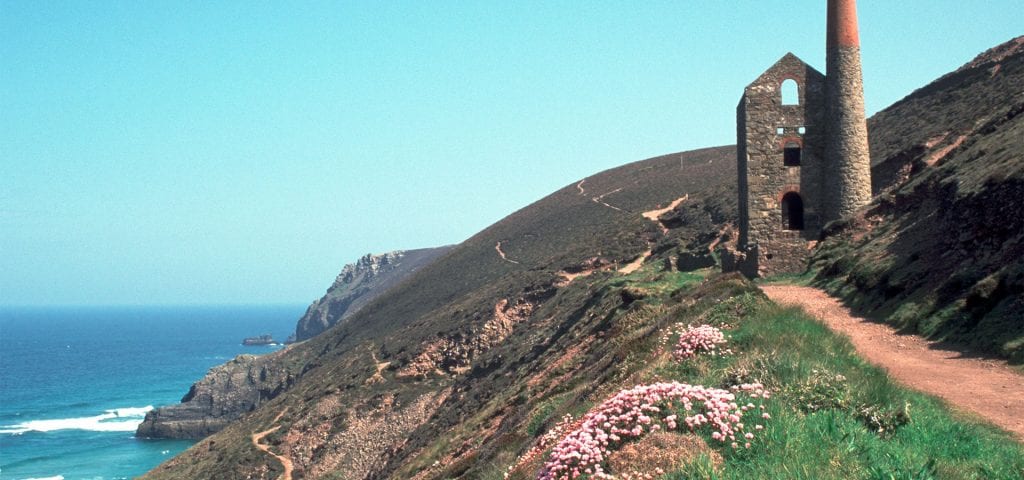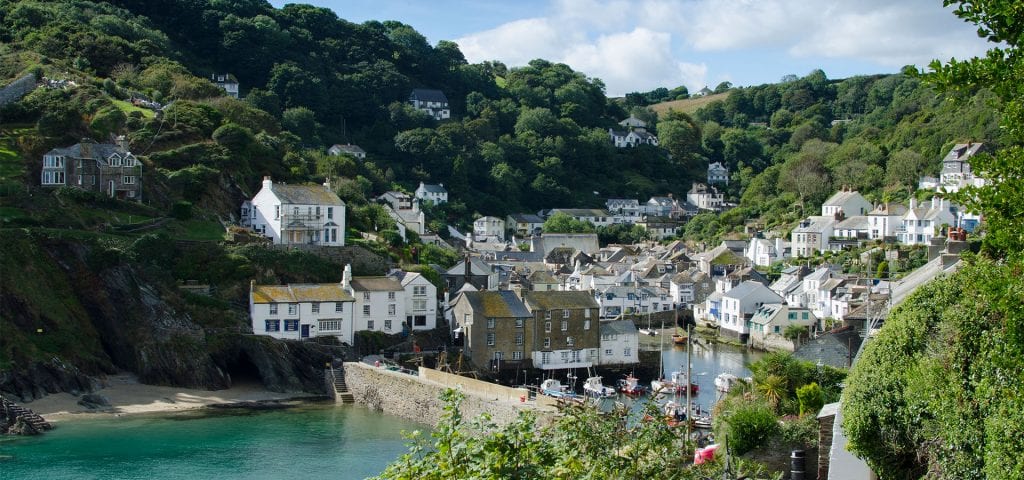It’s said that at the bottom of every mine in the world, you’ll find a Cornishman. It’s thanks to Cornwall’s mining heritage that Cornish place names, surnames and pasties have travelled to Australia, South Africa, Mexico and the USA – the result of mass migration in search of better opportunities at developing mining areas elsewhere.
While talk of reviving Cornwall’s industrial powers is ever optimistic, it has long used its past glories to thrill locals and tourists alike. The engine house has become emblematic of the hardy and industrious nature of the Cornish, and it looks pretty damn good when backed by azure waters and a blaze of yellow gorse (we’re talking about you, Wheal Coates).
So precious is this landscape, it has been designated a World Heritage Site by no less than UNESCO, placing it on a par with international treasures like Machu Picchu, the Taj Mahal and the Great Wall of China. The Cornish Mining World Heritage Site is made up of 10 Areas, from St Just on the wildest edge of the peninsula, to the now peaceful Tamar Valley with Tavistock on the Cornwall/Devon border.
In between is the once bustling Port of Hayle; Camborne and Redruth with Wheal Peevor and Portreath – home of world-changing inventions and Cornwall’s last operating tin mine; Tregonning and Gwinear with Trewavas, which includes 17th century Godolphin House; Gwennap with Devoran, Perran and Kennall Vale, dubbed the richest square mile in the Old World its heyday; spectacular St Agnes; and Luxulyan Valley with Charlestown, much beloved of period film sets.
Cornish Mining World Heritage Site Co-ordinator Deborah Boden explains how its approach to landscape management is defined by UNESCO and its policies, and that this includes how the inscribed landscapes of Cornwall and west Devon are protected for the benefit of residents and tourists alike.
“Visit Cornwall calls it regenerative tourism; we call it contributory,” she says. “In essence, tourism should be contributing to the improvement of the infrastructure, lifestyle, economy and environment of where it’s taking place. If it isn’t, it’s not good tourism.
“You could equally call it “place-shaping”: tourism should be creating places where communities are able to live a good, healthy life. If it’s good for residents, it will be better for visitors. That’s one of the core principles: that tourism should be developed for, by and in consultation with the community.”
In the early 2010s, Cornish Mining ran the Discover the Extraordinary campaign in a bid to get a different type of tourism into different places in Cornwall – using the landscape and human stories as an offer, and sharing the love between the honeypot coastal spots and the lesser-known inland areas, such as agricultural Wendron and the wild, windswept moorland of Caradon Hill.
“We wanted to prove there was a healthy market out there for tourism that gets under the skin of the place,” says Deborah, “and encourage people to be curious and find out more about different places and how they came to be the way they are, while making a contribution.”
Over a three-year period, participating businesses – from shops to guided tours, catering hubs to transport – saw an uplift of around 30% in visitor income compared with those that didn’t take part. “It was a very specific project to test the principle and demonstrate what results could be generated, and we were thrilled to have the evidence to show it will work,” says Deborah. “It builds beautifully on our tradition and shines a beacon of hope. Great tourism can sustain better places for residents.”
The Cornish Mining WHS was also responsible for inspiring the phenomenon that was the Man Engine. For its tenth anniversary in 2016, dubbed “Tinth”, the largest mechanical puppet ever constructed in Britain was commissioned from Golden Tree Productions to make a journey from Tavistock to Geevor Mine. As it travelled the length of Cornwall, the 40ft-high metal miner gathered momentum, with tens of thousands of people gathering at each stop to witness the magic. The video footage was seen in 112 countries and achieved stratospheric social media reach, taking Cornwall around the world. “We’d love to bring him back – for now he’s just resting,” says Deborah.
As we gear up for a post-lockdown summer (all digits crossed), she has a clear message for potential visitors. “Last year was an eye-opener for everyone. The pandemic had its impact, with more and more visitors wanting to stay in the UK. Cornwall has a long tradition as the preferred location for a domestic holiday, and we can see that continuing for a couple of years, at least until everyone is vaccinated and the virus is stopped in its tracks.
“With that in mind, we want to avoid some of the negative aspects of last summer, with some people ‘wild’ camping in areas without the right infrastructure, or littering our precious landscape. The vast majority of visitors are lovely and respectful, and pleased to be on holiday in a lovely place, but a few can make things uncomfortable. That’s why we want to be upfront about how we care for the Site and what the offer is, and why making a contribution to the lives of those who live here is absolutely the right thing to do.”
To learn more about the Cornish Mining WHS visit www.cornishmining.org.uk
Facts
- 20,000 hectares – the largest industrial World Heritage Site in the UK
- 10 Areas, from West Penwith to the Tamar Valley
- Over 200 Cornish-type engine house sites
- 209,305 tons of copper ore mined in 1855-6, Cornwall and Devon’s biggest year for production
- Daubuz, Williams, Harvey or Bolitho – names of the powerful tin smelting families
- 800,000 tons of copper ore mined in the Gwennap Mining District between 1815-1861, leading to the nickname “the Copper Kingdom”
Names
- Richard Trevithick – road-tested the world’s first practical steam powered vehicle in Camborne in 1801, 28 years before Stephenson’s Rocket
- Humphry Davy: designed the miners’ safety lamp, and refused to patent it so it could be used as widely as possible
- Thomas Daniell: Mineral lord William Lemon’s agent, known as ‘Guinea-a-Minute’ due to his business acumen and financial success
- Captain Francis Oats: one-time chair of De Beers Diamond Mine in South Africa, as a boy he worked down a mine near St Just
- Charles Rashleigh: an entrepreneur who took advantage of the expanding mining industry around West Polmear to develop the port of Charlestown, which was named after him


